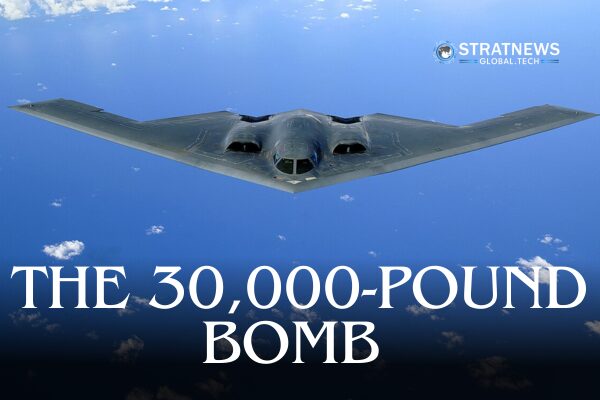Israel Dominates the Skies but Faces Limits
Israel’s recent airstrikes on Iran have demonstrated precision and reach, but a critical gap remains—its inability to destroy Iran’s most fortified nuclear sites. That task likely requires the U.S.-made GBU-57, a 30,000-pound bunker-busting bomb designed to penetrate deep underground facilities like Fordow. Without it, Israel’s strikes, though bold, fall short of neutralising Iran’s nuclear capabilities.
While Iran has responded with missile attacks on Israeli cities, the balance of technological and strategic power still tilts in Israel’s favour. Yet key challenges remain—particularly when it comes to Iran’s deeply buried nuclear facilities.
The Role of US B-2 Bombers, GBU-57 and Bunker-Busting Weapons
A potential game-changer in any extended campaign would be the involvement of the US military, particularly its B-2 stealth bombers. These aircraft, of which only 20 exist, were relocated in March to Diego Garcia, a strategic US-British base in the Indian Ocean.
The B-2 bombers are capable of delivering the 30,000-pound GBU-57 Massive Ordnance Penetrator. This “bunker-buster” bomb is specifically designed to destroy hardened underground targets, including nuclear sites like those found in Iran.
Experts say without these capabilities, Israel alone is unlikely to inflict lasting damage on Iran’s most fortified installations.
Fordow Facility: Iran’s Underground Shield
One of the most heavily protected locations is the Fordow uranium enrichment facility, buried deep under a mountain. According to the International Atomic Energy Agency (IAEA), Fordow has suffered little visible damage from Israeli air strikes.
Though Fordow operates around 2,000 centrifuges, it accounts for most of Iran’s production of uranium enriched to 60% purity. This is a critical threshold. If further enriched, the uranium could be used to create nearly four nuclear bombs. For comparison, another site, the PFEP, has produced less than half a bomb’s worth.
Western powers claim Iran’s enrichment levels exceed civilian needs, suggesting a covert path to developing nuclear weapons. Tehran, however, insists its programme is solely for energy and research purposes.
The Strategic Impasse
Israel’s recent actions have dealt significant blows to Iran’s infrastructure, but they stop short of neutralising its nuclear potential. The reality, say analysts, is that only the US has the equipment and reach to target Iran’s deepest sites effectively.
While Israeli leaders celebrate the damage inflicted so far, they acknowledge that a lasting solution requires joint military efforts—and political coordination—with the United States.
with inputs from Reuters


